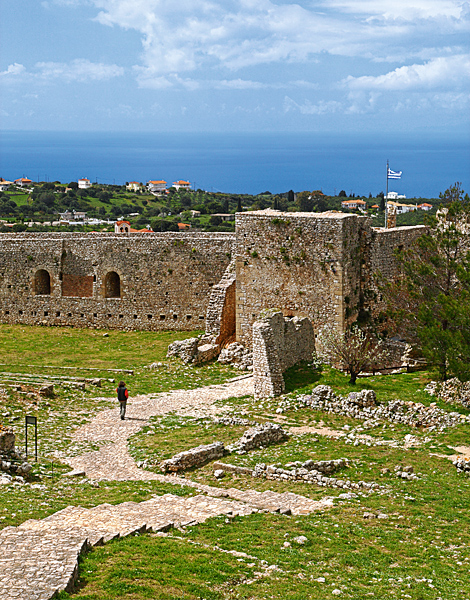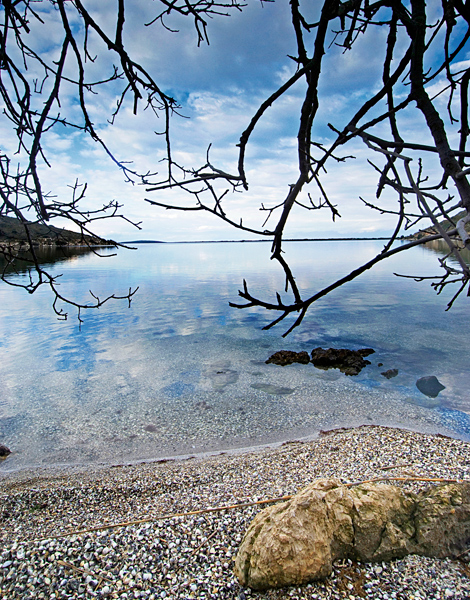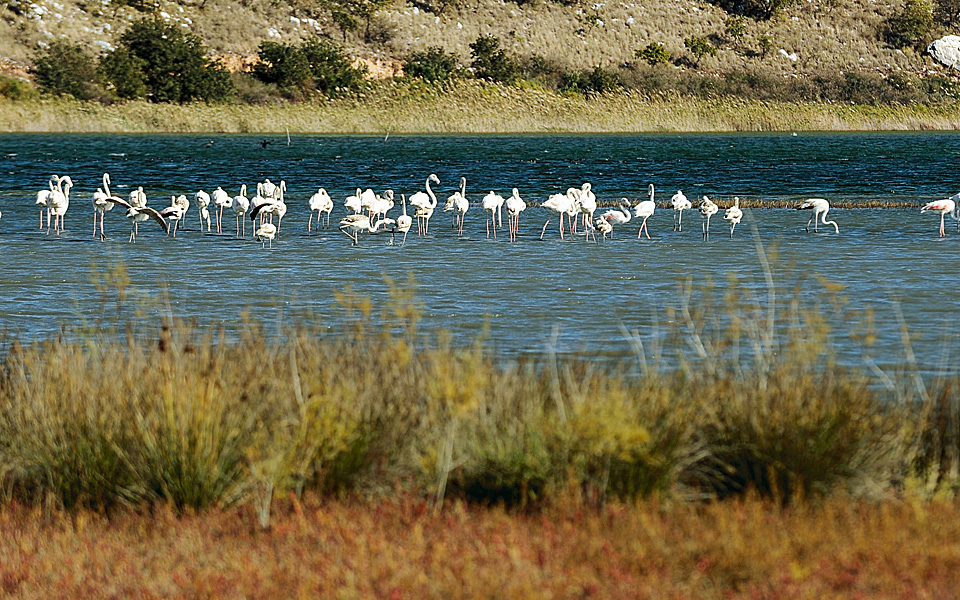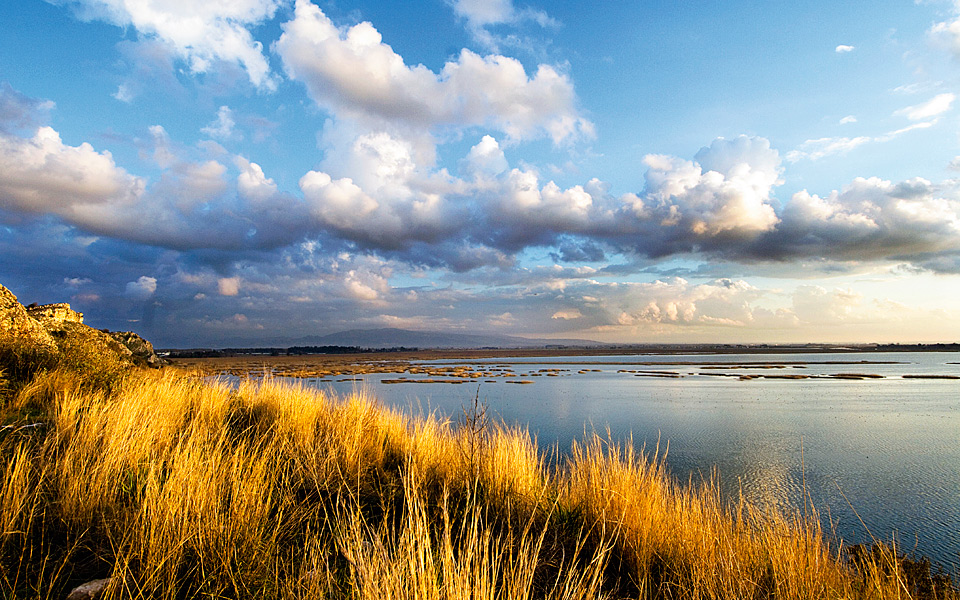Some travelers come here just to take the ferryboat from the port of Kyllini for Zakynthos or Cephalonia. Many more are on their way to the prefecture’s emblematic archaeological site, Ancient Olympia. But there are others seeking an alternative tour, here, in the northern part of Ilia, one full of variety and surprises, without having to compromise on historical interest and natural beauty.
This has always been an important and cosmopolitan region on account of Kyllini. In antiquity, it was the biggest port in the western Peloponnese and the main harbor of Ancient Elis, while under Frankish rule the famed city of Glarentza was built and flourished on its ruins, serving as the port of the capital of the Principality of Achaea, Andravida. The city minted its own coins, hosted branches of major European banks and engaged in commerce as well as cultural exchanges with towns in Italy. It quickly grew to become not only the main port of the Morea but also one of the largest trading centers of the Eastern Mediterranean. All that remains of the once great city – parts of its defensive walls and Gothic church – lies in ruins on the Hill of Chelonatas, while the rest of its former splendor is now lost among the wild vegetation and in the sea.
Today, the port of Kyllini has hotels and restaurants, a developed stretch of sandy beach, as well as a marina. The town has retained its popularity thanks in no small part to its spa facilities. Located just 10 kilometers from the town, the waters of the thermal springs (26C), celebrated since ancient times, are said to heal a number of skin, respiratory, musculoskeletal and other disorders. Next to the hydrotherapy center, many choose to enjoy mud baths while visitors who want to be pampered opt for the wellness and relaxation treatments provided by the five-star spa hotels situated right on the beach.
“ All that remains of the once great city lies in ruins on the Hill of Chelonatas, while the rest of its former splendor is now lost among the wild vegetation and in the sea. ”

© Olga Charami

© Clairy Moustafellou
From Kyllini and as far as the capital of the prefecture, Pyrgos, the coastline is effectively one long sandy beach, the best known stretch of which is Kourouta, described – with some exaggeration – as the “Myconos of the Peloponnese,”due to its buzzing beach bars, restaurants and shops. Equally popular is the beach at the settlement of Kastro, although one of the biggest attractions in this area is the medieval Chlemoutsi Castle, which served as the administrative center and main stronghold of Glarentza in the Frankish period. One of the finest examples of Frankish castle architecture in the Peloponnese, it is very well preserved.
TRIVIA
According to the locals, the Castle of Chlemoutsi is visible 100 miles out at sea. Whereas approaching by land, according to the 17th century Turkish traveler Evliya Çelebi, you can see it from a distance of five days!
Heading inland you will come to Andravida, capital of the Principality of Achaea in the late Middle Ages. A visit to its main square will give you a sense of its former grandeur. In reality however, little remains of that period, most notably the ruins of the Church of Aghia Sophia. But here there is something else to discover: a rare breed of horses. Close to extinction, the Andravida horse is the result of crossing Anglo-Normans with local breeds. The riding center is still under construction but you can see the horses at the annual equestrian exhibition, held each September for the past 81 years, or even in and around the town, where they are a fairly common sight.
A 15-kilometer drive will take you to Ancient Elis, where in antiquity athletes would train for one month in preparation for the Olympic Games. Particularly impressive, even though it never had seats, is the 4th century BC theater which still hosts shows as part of the yearly summer festival.
But perhaps the truly memorable experience for visitors is in the north, namely the most important and only internationally recognized wetland in the Peloponnese, the Kotychi Lagoon and the Strofylia Forest. Designated a national park covering an area of 6,000 hectares, the Ramsar site comprises a huge complex of lagoons, marshes, water meadows, sand dunes and reed beds, which stretches as far as Kalogria beach in Achaia and includes the wonderful Forest of Strofylia. Covering 2,200 hectares, the coastal forest features a mix of Aleppo pine, Valonia oak and many other species, including the rare stone pine, most of which are 100-200 years old, constituting the largest forest of its kind in Greece and one of the biggest in Europe.
“ Covering 2,200 hectares, the Forest of Strofylia features a mix of Aleppo pine, Valonia oak and many other species, including the rare stone pine, most of which are 100-200 years old, constituting the largest forest of its kind in Greece and one of the biggest in Europe. ”

© Vangelis Zavos
This part of the tour has a completely different feel, as do the main attractions. Towns and villages are few and far between. Here you will encounter farmers and tiny hamlets, and vast areas of cultivated land, with or without greenhouses, where a range of products are grown, including strawberries, watermelons and artichokes. At the Kotychi Lagoon you will see men tending the traditional fish pens known as “divaria”, while at the picturesque cape and small harbor of Kounoupeli you can watch boats leaving for deep-sea fishing in the Ionian.
For nature lovers, the experience can be quite amazing. At the lagoon you can observe some of the 270 recorded species of birds or enter the dense forest and walk along dirt paths in the shade of pine trees that look like enormous umbrellas. You can also spend some time at the gorgeous beach framed by sand dunes and swim in the crystal-clear waters of the Ionian Sea, look for orchids and other wild flowers, and gaze at the Black Mountains of Achaia, a veritable paradise for birds of prey.
“ At the lagoon you can observe some of the 270 recorded species of birds or enter the dense forest and walk along dirt paths in the shade of pine trees that look like enormous umbrellas. ”











